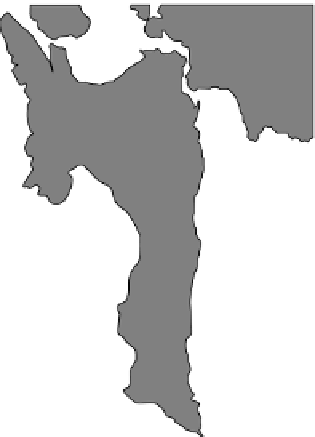Agriculture Reference
In-Depth Information
8.2
CLIMATIC ZONES OF THE THREE FARMS
The climatic zones in each of the areas of the three farms are described very differently.
In the Philippines climatic zones are largely determined by rainfall patterns. Type II,
which is the type experienced by the Philippine farm, as shown in Figure 8.7, has no
dry season and has high rainfall in the winter months, particularly February as can
be seen in Figure 8.4. Type IV zone on the lower eastern side of Leyte is similar to
type II in that rainfall is evenly distributed during the year, but it does have a short
dry spell at some time during the summer months.
In Ecuador the climatic zones are primarily determined by the altitude of the area,
as shown in Figure 8.8. There are thus three climatic zones: the costal area, which tends
to be tropical with high humidity and high temperatures, the sierra or central highlands,
which is where Pinantura, Quito, is located, are variable in temperature, depending on
altitude, and the Eastern lowlands are the rainforest type of climate.
In Ohio the lowest temperatures during the winter are the most important consider-
ation in terms of crop production, particularly with reference to the ability of fruit and
nut tree to survive the winter (Fig. 8.9). These temperatures also serve to determine
what types of protection animals need during the winter months, particularly in
terms of making sure their water source is not frozen.
In addition to the lowest expected temperatures, the average first killing frost in the
fall and the last in the spring are also important dates for determining safe planting and
heating requirements for animals. For Clinton County, Ohio, the last killing frost in
Figure
8.7.
Climatic zones in the Philippines determined largely by rainfall patterns. (Data
from http:
//
www.fao.org
/
ag
/
AGL
/
swlwpnr
/
reports
/
y_ta
/
z_ph
/
phmp131.htm.)































